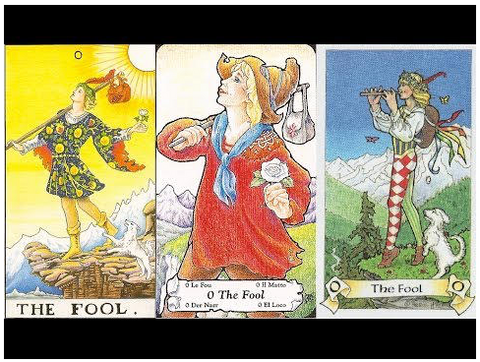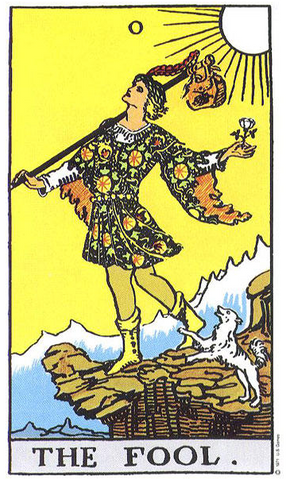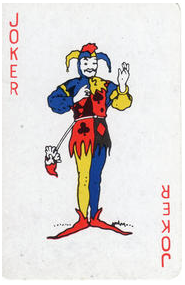
The Tarot is separated into the Major and Minor Arcana, totaling seventy-six cards. The Major Arcana, also called the trump cards, comprise twenty-two cards (numbered zero through twenty-one). The Major Arcana represents the seeker’s spiritual journey from ignorance to enlightenment, highlighting all of the phases, challenges and obstacles we face when embarking on the search for higher wisdom and secret knowledge. In a reading, the Major Arcana cards refer to the broader changes and patterns in your life, particularly in regards to your spiritual awakening and self-actualization.
Like modern playing cards, the Minor Arcana is separated into four suits, each containing numbered cards, three court cards and an ace. The four suits represent the four different aspects of the self—physical, emotional, mental and spiritual. Each of the cards within a given suit represents the daily phases, challenges and obstacles we face in regards to achieving mastery over the body, heart, mind and soul.
The twenty-two cards of the Major Arcana are the master archetypes of the Tarot, and contain its essential teachings. These archetypes are not unlike the psychological archetypes proposed by Carl Jung, which is probably why Tarot divination is so universal and effective.
The first card of the Tarot is the Fool, card number zero.

Yes, the Fool represents the beginning of a spiritual path, but it also represents it’s end, it’s completion, or rather that there really is no end to the path. Remember that the Fool is card number zero, not number one. Zero is considered a sacred number because the circle symbolizes both Nothing and Everything, the number which harmonizes duality into singularity. The circle of zero also symbolizes the circular nature of the spiritual path: we go round and round the path forever because the growth of knowledge never ceases. So similar to Socrates' paradox: "I know one thing: that I know nothing."
Notice that the Sun shines behind the Fool’s head, almost like a halo. Halos appear conspicuously throughout the Tarot to symbolize the enlightened nature of the character on a given card. But how can the Fool be enlightened when he has only begun his quest for knowledge?
Because while the Fool may not yet possess intellectual knowledge, his demeanor is the essence of spiritual practice. When a Fool ultimately reaches enlightenment, he will realize that the smartest way to behave is like the Fool. And what way is that?
Well, let’s take a closer look at the card.
You’ll notice that the Fool carries a knapsack over his shoulder, but it’s practically empty, symbolizing that he does not carry the past around with him. He does not dwell on the past like so many of us. Because he is not tethered by the past, he is liberated from it.
Next, you might notice that the Fool is about to step off a steep cliff—a fall he may not survive—and yet, the Fool has not a care in the world. In fact, in most decks, the Fool usually has his eyes closed and arms outstretched, oblivious to the impending danger. The Fool pays no attention to his next step because he does not worry about the future like so many of us. Because the Fool is not tethered to his fear of the future, he is liberated from it.
These two details point to the real wisdom here: the Fool, despite his silliness and his lack of book knowledge, is completely and totally present. The Fool is fully engaged with the here and now, he’s not in his head worrying about the future or dwelling on the past. Most of us cannot say the same.
A cute little dog runs alongside the Fool, representing his innocence and playfulness, two other highly spiritual demeanors. The Fool is childlike and full of wonder, admiring only beauty, represented by the flower in his hand.

See, a truly enlightened master is not dour and serious all the time. In fact, a self-realized being is indistinguishable from a fool because their playful innocence makes them childlike. Just think of Yoda, the perfect example of the divine fool. Perhaps this wisdom was borrowed from the Bible verse, “Truly I tell you, unless you change and become like little children, you will never enter the kingdom of heaven” (Matthew 18:3). Enlightenment returns you to the state of childlike wonder that we often lose with age.
In modern decks, the Fool transformed into the Joker card. Curiously, the Joker is often used as a wild card, meaning that it can be used to stand in for any other card in the deck. This custom may also derive from the secret knowledge that the Fool represents all of the other cards in the Tarot. Ultimately, the Tarot reveals that God, the Spirit or the Mystery is within us always, which is why the Fool can stand in for any of the other cards, and why this single card contains some of the highest truths expressed in the Tarot.
